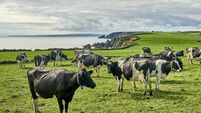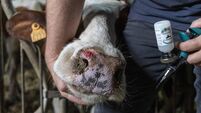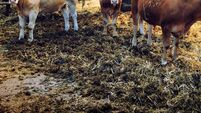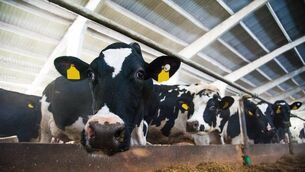Directive linked to phosphorous deficiency
Cows in these herds will benefit from phosphorous supplementation.
Based on a large number of grass analyses, there is evidence that the P content of many of our grazing pastures is less than 0.3%.
Teagasc’s latest figures indicate a 20% increase in soil deficiency of phosphorous.
Unfortunately, the Nitrate Directive is preventing some farmers from getting to the root of the problem by correcting phosphorous levels in their soil.
The Nitrate Directive restriction on phosphorous use for reseeding is a disincentive also to ploughing pasture for reseeding.
Dutch retailers back Irish beef
IRISH beef is now the preferred choice of Dutch retailers, according to Bord Bia.
Listings have been secured with more than 15 retail chains in the Netherlands, which have a combined market share of 70%.
According to Declan Fennell of Bord Bia in Amsterdam, Dutch buyers prefer Ireland’s extensive, grass-based beef farming. Our proximity to the market and ability to supply quality-assured steer beef are also advantages.
The Albert Heijn Greenfields brand of Irish beef has generated a positive image, positioned in the chain’s Pure & Honest range of sustainable products. Its success has inspired a number of retailers and cash and carries to launch their own brands of Irish beef, such as O’Sullivan — A Taste of Ireland (at the Sligro chain), and Superior Hereford (Super de Boer).
Other retailers have capitalised on an emerging trend of consumer information through the media, making them aware of the importance of beef breeds such as Hereford and Angus. This has resulted in the Shannon Matured (in the MCD chain) and Irish Angus steaks (in Plus shops) brands.
Sustainability and animal welfare will be the key challenges over the next 10 years, said Mr Fennell. The 40,000 tonnes of Irish beef exported to the Netherlands in 2009, worth €129m, represented a 25% and 40% increase in volume and value respectively, compared to 1999 exports.













